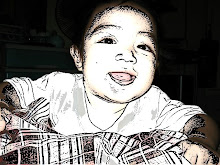Sciatica is a term used to describe a problem with the sciatic nerve. The sciatic nerve is a large nerve that starts at the lower back and runs down the back part of each leg. It is responsible for the movement of the muscles in the back of the lower leg and knees. It also is what gives you feeling in the back of your thigh, your lower leg and sole of the feet. Symptoms of sciatica are numbness, weakness or tingling. Although, it's usually only on one side of your body and starts in your lower back, it can affect your thighs, calf, foot or your toes.
Many people don't fully understand sciatica and don't realize they are victims of sciatica because of where the pain is located. The majority of their pain may be in their thigh or calf and assume they have a problems with their legs rather than the sciatic nerve in their back. In some situations, sciatica may go away on its own, but it often needs medicine, exercises or possible surgery. Although at times, doctors can't find a cause for sciatica, it my come from a pelvic fracture, ruptured intervertebral disc or spinal stenosis.
Some of the symptoms of sciatica are different changes in the sensation you feel in the back of the thigh, calf or sole of your feet such as tingling, numbness or a burning sensation. These are usually the first signs that something is wrong. Any sensations that are abnormal may be signs of sciatica, especially if they are mixed with pain. The pain may start minor and become severe or vice versa. In some of the more severe cases of sciatica, the patient may experience inability to move the feet or bend their knees along with having trouble walking.
Patients are usually diagnosed with sciatica after seeing a doctor for pain in the lower back that extends downward. The doctor will first run blood tests, take X-rays as well as MRIs or EMGs. Nerve conduction tests to determine nerve damage are also taken.
Treatment of sciatica may vary depending on the severity of the illness. The first part of the treatment involves pinpointing the exact cause of the nerve disorder. In some cases that are minor, there will be little or conservative treatment. They will only do this if there appears to be little or not trauma to the area or no degeneration of the nerve area.
If the sciatica is caused from a herniated disc, they may choose to remove the parts that are putting pressure on the nerve. Other forms of treatment for sciatica are injections to reduce an inflammation near the nerve or pain relievers. Physical therapy may also be recommended in some cases to help rebuild the strength of the muscles.
------------------------------------------------------------------------------------------
To discover everything you need to know about sciatica and low back pain
Subscribe to:
Post Comments (Atom)

No comments:
Post a Comment